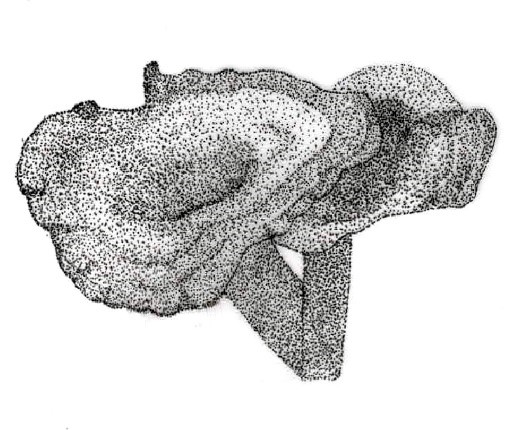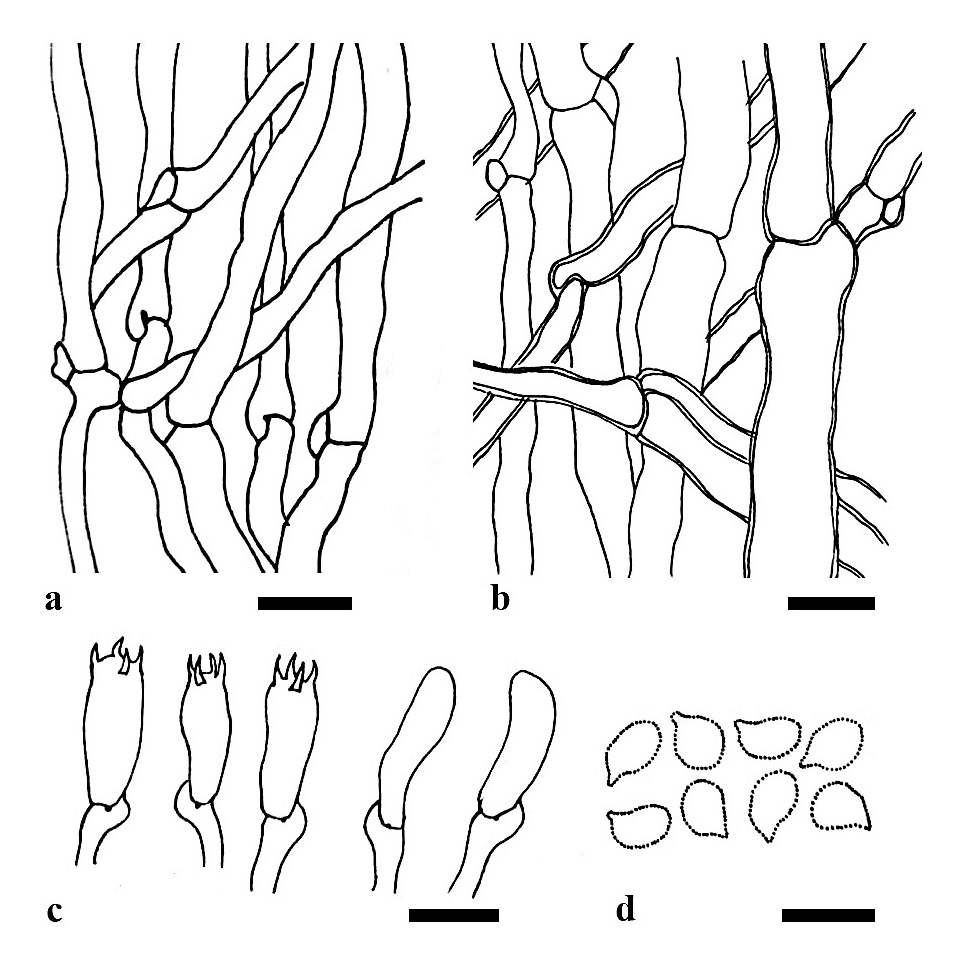Fungalpedia – Note 64 Xanthoporus
Xanthoporus Audet
Citation if using this entry: Fallahi et al. (2023) New genera in 2010-2011. Mycosphere (in prep)
Index Fungorum, Facesoffungi, MycoBank, GenBank, Fig 1, 2.
Chemotaxis, phylogenetic analysis based on LSU and ITS sequence data, morphological and trophic characters showed that Xanthoporus was a new genus in Scutiger s. lat. (Steccherinaceae, Polyporales) (Audet 2010). Xanthoporus occupy the basal position of the family. The genus has a global distribution and accommodates two species X. peckianus (Synonymy: Polyporus peckianus (Cooke) Sacc) and X. syringae (Synonymy: Albatrellus syringae (Parmasto) Pouzar). The type species of the genus, Xanthoporus peckianus was found in Québec, Canada, and reported as a saprotroph that causes white rot mainly on deciduous trees. The genus is characterized by an annual, sulphur-yellow basidiomata turning brownish on maturity and bruising (Audet 2010). The stipitate basidiomata bear several spatulate-shaped pileus with younger ones superimposing the secondary ones and turning funnel-shaped on maturity (Audet 2010). The hymenophore is composed of angular pores (Audet 2010). Xanthoporus has monomitic hyphal system with clamped generative hyphae (Audet 2010). Gleoplerous hyphae are present in the context of the pileus and stipe (Audet 2010). The basidiospores are hyaline, ellipsoidal to subspheroidal, non-amyloid, non-dextrinoid and acyanophilic (Audet 2010). The genus can be differentiated from other members of Scutiger s. lat. by its entirely yellow basidiomes, yellow oleiferous hyphae of the flesh, and basidia with candelabra-like branching, and very small, thin-walled, acyanophilic, and pale brown spores. Xanthoporus syringae and Xanthoporus peckianus have a predominant yellow pigment that surely has a phylogenetic value. The genus members show no macro-chemical reactions to Potassium hydroxide (KOH) or Sulfuric acid (H2SO4) (Audet 2010).
Type species: Xanthoporus peckianus (Cooke) Audet
Other accepted species: Xanthoporus syringae (Parmasto) Audet
Fig 1. Basidiomata of Xanthoporus peckianus (redraw from the Mycology Collections Portal (MyCoPortal))
Fig 2- Microscopic structures of Xanthoporus syringae (redraw from Dai et al. 2004). a Hyphae from trama. b Hyphae from context. c Basidia and basidioles. d Basidiospores. scale bars: a-c=10 µm; d=5 µm.
References
Audet S. 2010- Essai de découpage systématique du genre Scutiger (Basidiomycota): Albatrellopsis, Albatrellus, Polyporoletus, Scutiger et description de six nouveaux genres. Mycotaxon 111, 431-464. https://www.mykoweb.com/CAF/PDF/Essai%20de%20d%C3%A9coupage%20syst%C3%A9matique%20du%20genre%20Scutiger.pdf
The Mycology Collections Portal (MyCoPortal). https://www.mycoportal.org/portal/taxa/index.php?taxauthid=1&taxon=Albatrellus+peckianus
Dai YC, Yuan HS, Yu CJ, Cui BK, Wei YL, Li J. 2004- Polypores from the Great Hinggan Mts., NE China. Collection and Research. 17, 71-81. https://libknowledge.nmns.edu.tw/nmns/upload/bulletin/000000155/209000c/200412-71.pdf
Entry by:
Maryam Fallahi, Center of Excellence in Fungal Research, Mae Fah Luang University, Chiang Rai 57100, Thailand.
(Edited by Kevin D Hyde and Ishika Bera)
Published online 4 September 2023

